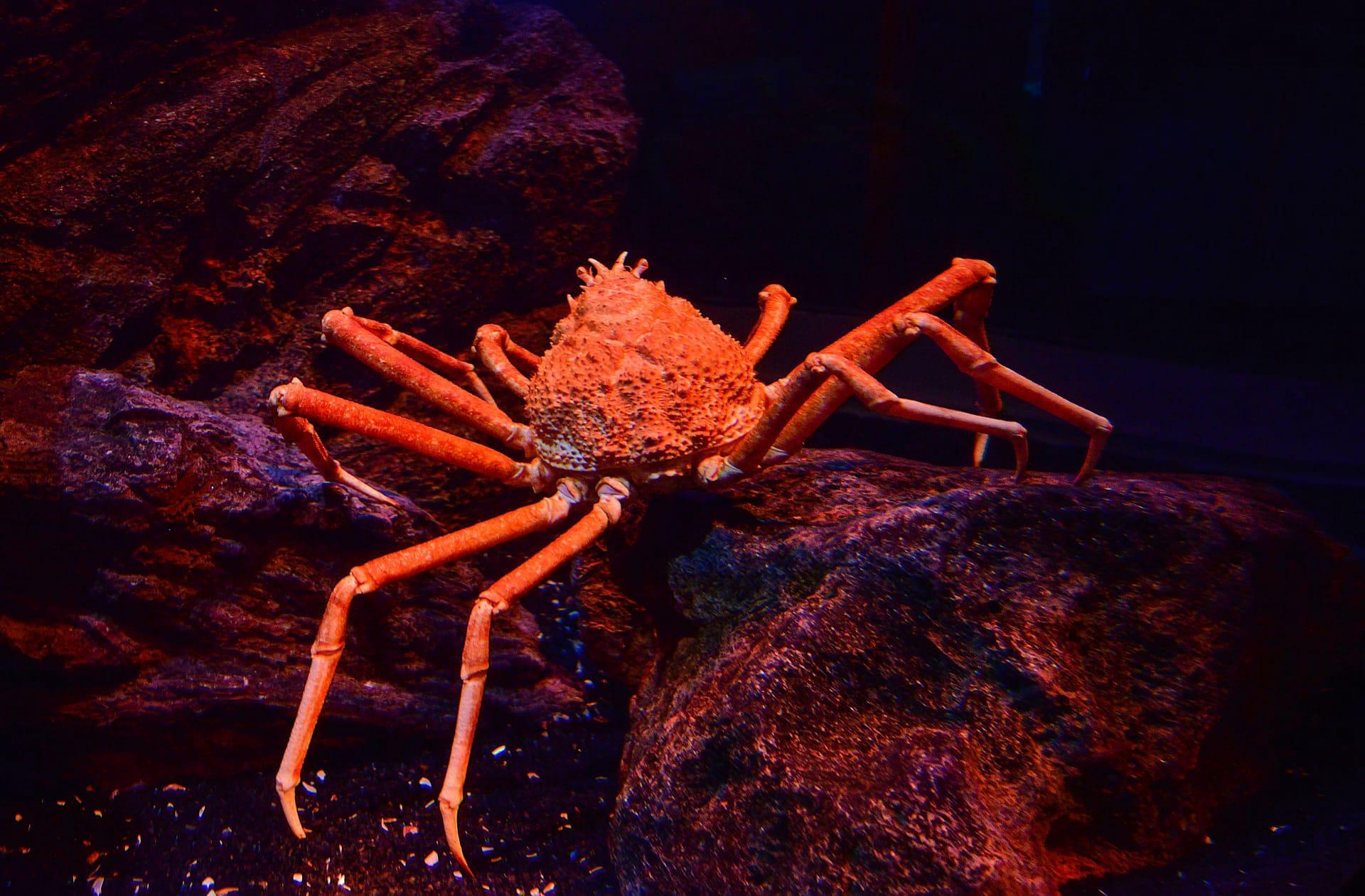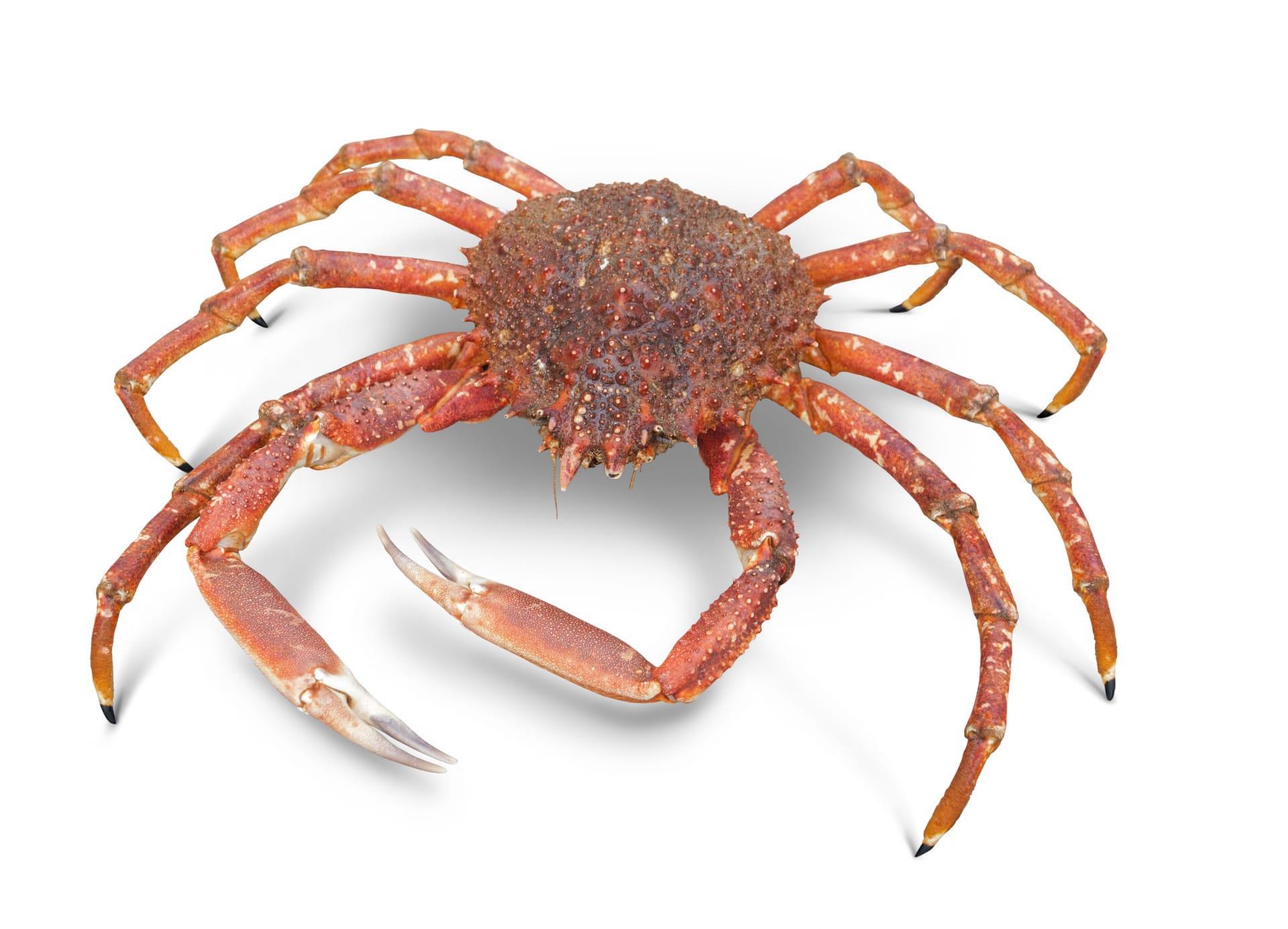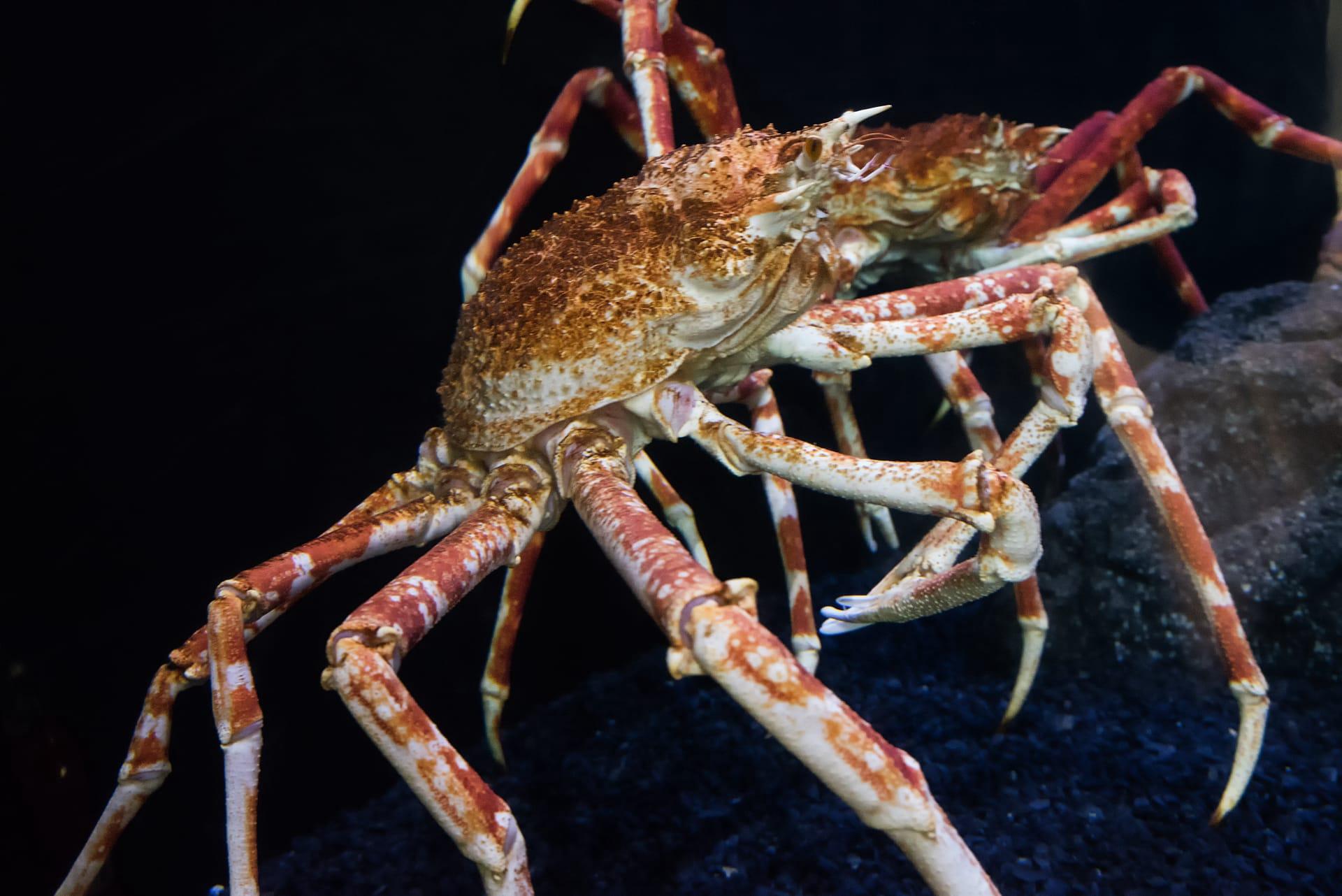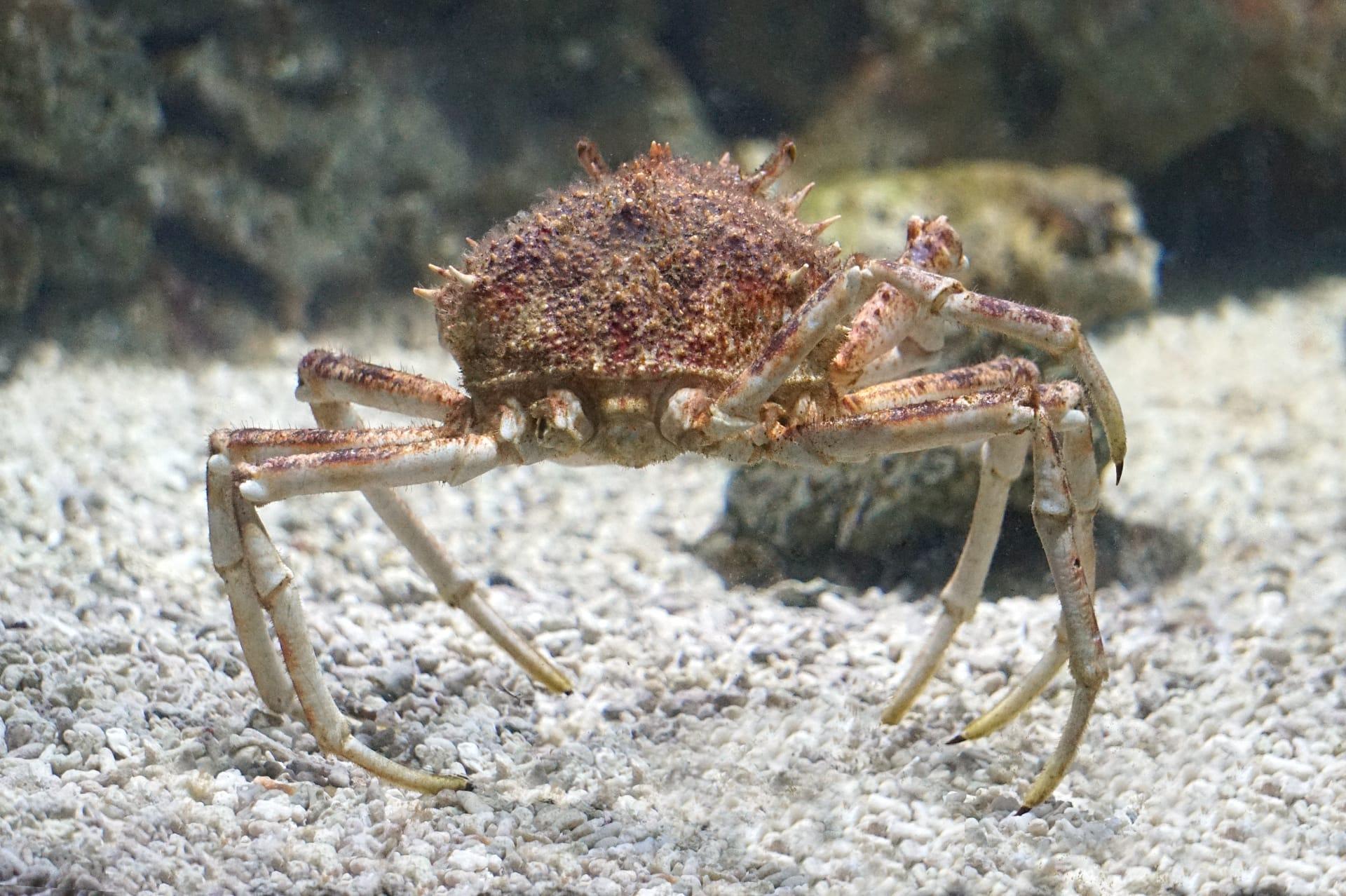1
Spider crabs, known for their long, spindly legs resembling those of a spider, hold the title for the largest leg span among all arthropods. The Japanese spider crab, a notable species, boasts a leg span that can reach up to 12 feet (3.7 meters) from claw to claw. This impressive span is not just for show; it aids in scavenging food from the ocean floor and provides a defensive mechanism against predators. Their size, however, doesn't make them invincible, as they often fall prey to octopuses and humans.
These crabs are also masters of disguise. To avoid predators, spider crabs adorn themselves with various items from their environment, such as algae, sponges, and other sea debris. This practice is not just a random act of fashion; it's a survival strategy. By attaching these materials to their shell, they create a natural camouflage that blends seamlessly with the ocean floor, making them nearly invisible to both predators and prey. This ability to hide in plain sight is crucial for their survival, especially considering their large size and relatively slow movement.

2
Spider crabs have a unique developmental process called molting, where they shed their old exoskeleton to grow a new, larger one. This process is critical for their growth but leaves them vulnerable for a short period until their new shell hardens. During molting, spider crabs retreat to safer waters or bury themselves in sand to avoid predators. The entire molting process can take several hours to days, depending on the size and age of the crab, during which they might increase their body size by 15-20%.
Despite their formidable appearance, spider crabs are known for their gentle and docile nature. They are scavengers, primarily feeding on dead animals and plant matter, rather than hunting live prey. This dietary preference plays a crucial role in the ocean's ecosystem, as spider crabs help clean the ocean floor by consuming decomposing organic matter. Their role as nature's cleanup crew highlights their importance beyond just being a marvel of size and camouflage.

3
The lifespan of spider crabs varies significantly among species, but some, like the Japanese spider crab, can live up to 100 years. This longevity is remarkable among crustaceans and is attributed to their slow growth rate and the deep-sea habitats many occupy, which have fewer predators. The long life of spider crabs contributes to their late maturity, with some not reaching reproductive age until they are 10 years old or older, which has implications for their population dynamics and conservation.
Spider crabs engage in a fascinating mating ritual that involves a gentle, almost tender interaction between the male and female. The male crab will cradle the female in his long legs for days, protecting her while she molts, a time when she is most vulnerable. Post-molt, her new exoskeleton is soft, allowing for successful mating. This protective behavior is a unique aspect of spider crab reproduction, showcasing a softer side to these seemingly formidable creatures.

4
Spider crabs are found in various oceans around the world, from shallow coastal waters to the depths of the ocean floor, as deep as 2,500 feet (762 meters). Their adaptability to different marine environments is a testament to their evolutionary success. The range of habitats they occupy includes rocky substrates, sandy bottoms, and even within kelp forests, each offering different resources and challenges for survival, influencing their behavior and diet.
The coloration of spider crabs is highly variable and often matches their habitat, a feature that enhances their camouflage capabilities. Some species can even change color to blend more effectively with their surroundings, a process influenced by factors such as the environment, diet, and the presence of predators. This ability to adapt their appearance is another layer of their defense mechanism, making them even harder to spot among the ocean's complex ecosystems.

5
Spider crabs are not just fascinating marine creatures; they also play a significant role in cultural practices and cuisines, especially in regions like Japan. The Japanese spider crab, due to its size and taste, is considered a delicacy, often featured in traditional dishes and ceremonial meals. However, overfishing and habitat destruction pose threats to their populations, leading to increased conservation efforts to ensure their sustainability. These efforts include regulated fishing seasons, size limits, and protected marine areas.
Research on spider crabs has contributed to advancements in biomimetics, where scientists study their exoskeleton structure and camouflage techniques for applications in technology and materials science. The strength and flexibility of their exoskeleton have inspired developments in protective gear and robotics, while their natural camouflage abilities are studied for advancements in stealth technology. The study of spider crabs extends beyond biology, impacting fields like engineering and design, demonstrating their significance not only in the marine ecosystem but also in human innovation and culture.